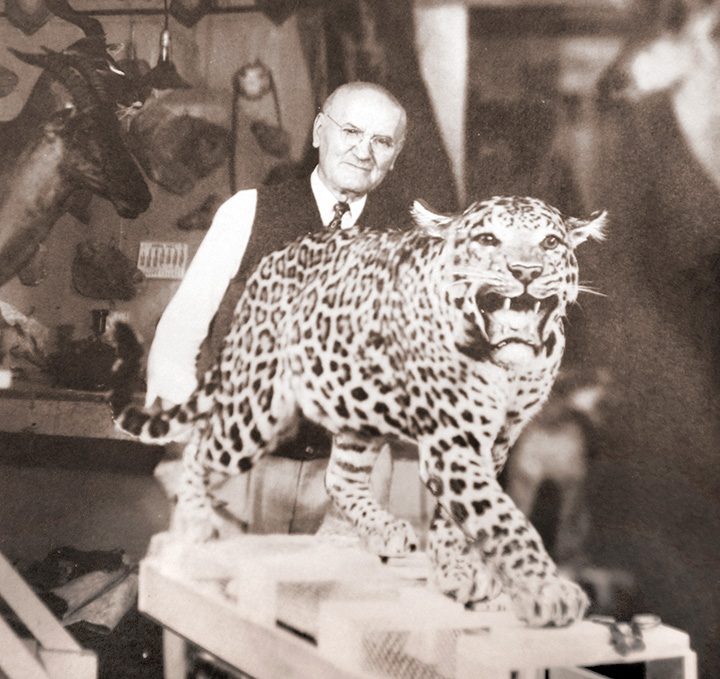
Date of Birth: February 18, 1879
Place of Birth: Budapest, Hungary
Date of Death: January 23, 1969
Place of Burial: Fairmount Cemetery, Denver, Colorado
Coloman Jonas was born the eldest son of Hungarian mail carrier. Supporting six sons and two daughters was a stretch for Coloman’s father, a government employee living on the banks of the Danube in Budapest. In 1895, at age sixteen, young Coloman began an apprenticeship with a local taxidermist at a salary of $5.00 per month. For the next decade, Coloman learned all that he could about the art of taxidermy, working on specimens brought in from around the globe, including Africa which was opening up as the newest frontier for trophy hunting. At the time, taxidermy was almost entirely subsidized by Royalty and the wealthy aristocracy. Coloman used his talent and personality to his advantage, teaching himself the German and English languages, as he worked his way into this higher society of artists and world travelers.
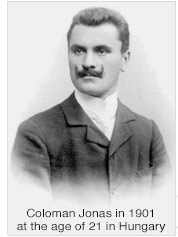
As Coloman’s reputation grew, he was eventually offered a job to work with the foremost taxidermist in the American West, Professor Gus Stainski in Colorado Springs. With the blessings of his father who told him, “Go my son; our country is poor and future prospects are not good. You will have a better opportunity in America,” Coloman made the lonely 7,000 mile trip to start his new life in America.
But Coloman and Professor Stainski did not see eye-to-eye on taxidermy techniques. Coloman found Stainski’s methods to be of lower quality than he was used to producing. Stainski was not receptive to Coloman’s progressive techniques of sculpting and casting anatomically accurate paper mache forms. Yet even while producing inferior products, Stainski was egotistical and difficult to work with. Coloman knew that he would have no long term future working for Stainski, so he began saving his money with the dream of opening up his own business.
Meanwhile, Coloman’s younger brother John had taken up the art of taxidermy back in Hungary, so Coloman started writing him glowing letters describing the beauty of the Rockies and the unlimited opportunity for hunting. In 1906 John also came to work for Stainski Studio as their newest junior taxidermist. They would work 12 hours a day and then take their Sundays off, riding their bicycles with a .22 rile and a shotgun strapped to the frame as they rode around Pikes Peak, exploring and collecting birds and animals.
Coloman later recalled, “In America, a man can start a business with little capital.” By 1908, the two brothers had saved up enough money to open their own business in Denver, and Jonas Brothers Taxidermy was born.
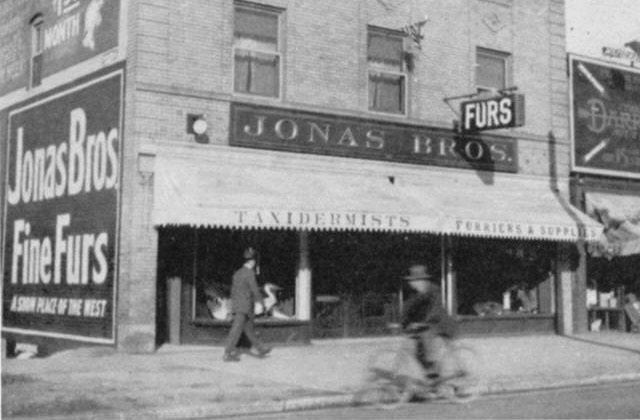
In 1909, younger brother Louis Paul immigrated from Hungary to join the business. As a teenager Louis showed an exceptional talent for sculpture which would serve him well throughout his life. Coloman was amazed at Louis Paul’s “grasp of anatomy and and fine feeling for form and motion in reproducing wild animals in clay and bronze.”
Soon after, brothers Leslie and Guy came to America to join the Jonas Brother Taxidermy empire. In the 1920s and 30s, Jonas was recognized as the premiere commercial taxidermy studio in America, creating both hunting trophies for sportmen clients and providing high-end museum dioramas for many of the top educational institutions.
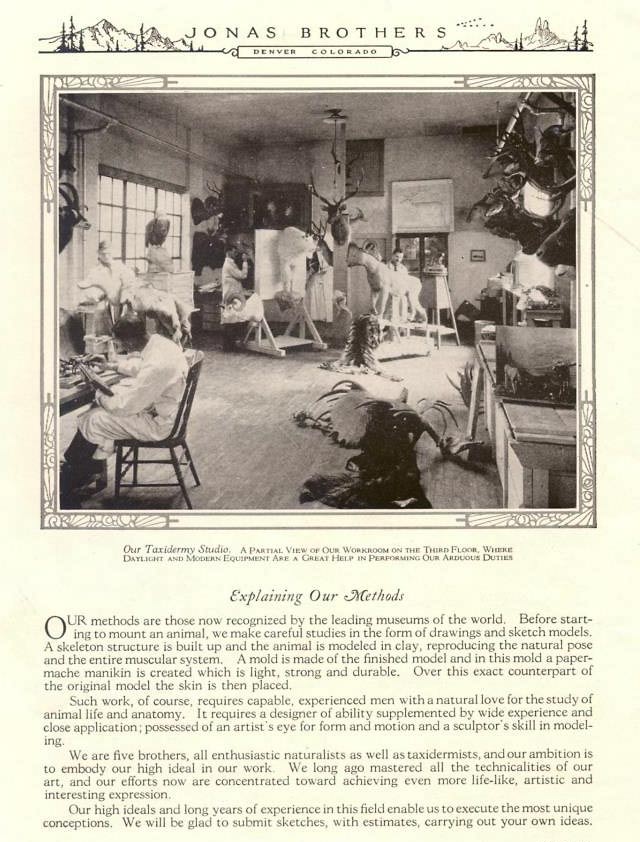
Eventually the brothers parted ways. There would be three separate Jonas Brother Taxidermy Studios, all successful. Coloman stayed with the Denver operation, Guy Jonas opened Jonas Brothers Seattle, and John, Louis Paul and Leslie opened a studio in Mt. Vernon, New York.
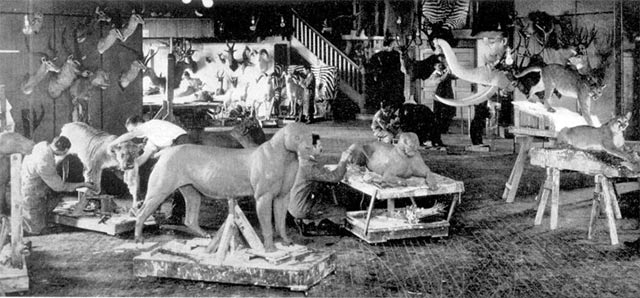
As their catalogue of animal sculpture molds grew, Jonas started offering their pre-made paper mache mannikins for sale to taxidermy studios, and a new industry was born: the taxidermy supply company. Later, they were among the first companies to convert their molds to allow for polyurethane production.
Coloman, or “Old Man” Jonas, as he was affectionally known, wrote an essay in 1920 entitled “No Competition On Top”. Every decade or so it is reprinted in a taxidermy publication to reach a new generation of taxidermists.
No Competition On Top
by Coloman Jonas
A piece of Taxidermy Work is like a fine painting — a luxury, and is regarded as such by the Discriminating Sportsman. Consequently, more than ever before, we have put forth greater effort to produce a piece of work that will be admired, appreciated and desired.
For over Fifty Years I have seen Taxidermy pass through its various stages, and from my observation and experience, I say to all my fellow Taxidermists — you cannot, for one moment regard Taxidermy as anything else but “Art”.
It cannot be successfully commercialized to the extent of taking in a volume of work — turning it out at the rate of “so many per day or week”, for a price that would not cover the honest effort necessary, to produce an artistic piece of work!
Be honest with yourself and your customer. Give him his money’s worth, but don’t give your time and efforts away.
It is far better to take only a few jobs, ask a fair price and devote time to each, necessary to produce a piece of work that will credit you and your shop.
Constantly strive to improve your work. Keep abreast of the times — of changing and improved methods. Study always, from actual life — no book can give you such a wealth of information.
Let your Shop be indicative of the kind of work you do — Clean, Artistic and Thorough. Use good tools and materials. Display good examples of your work — the kind you would do for your customer.
Maintain the respect of the public and the trade!
If you follow these simple Rules — you must reach the Top — and there’s plenty of room for all of us at the “Top”!
Coloman Jonas — 1920
Jonas Brothers Taxidermy
Denver, Colorado
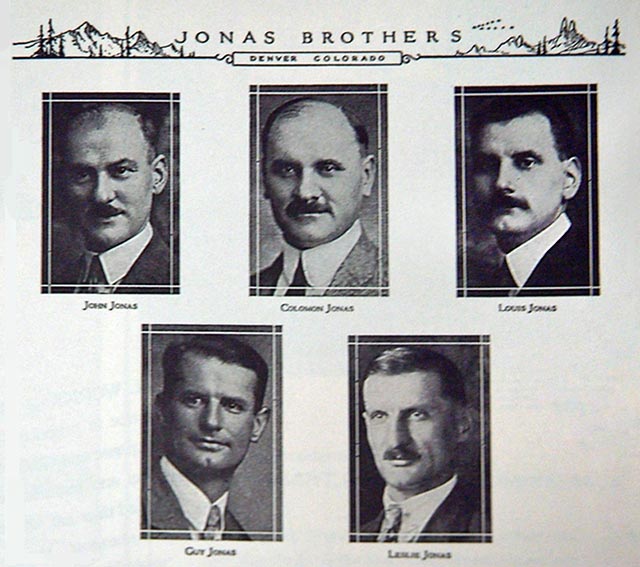
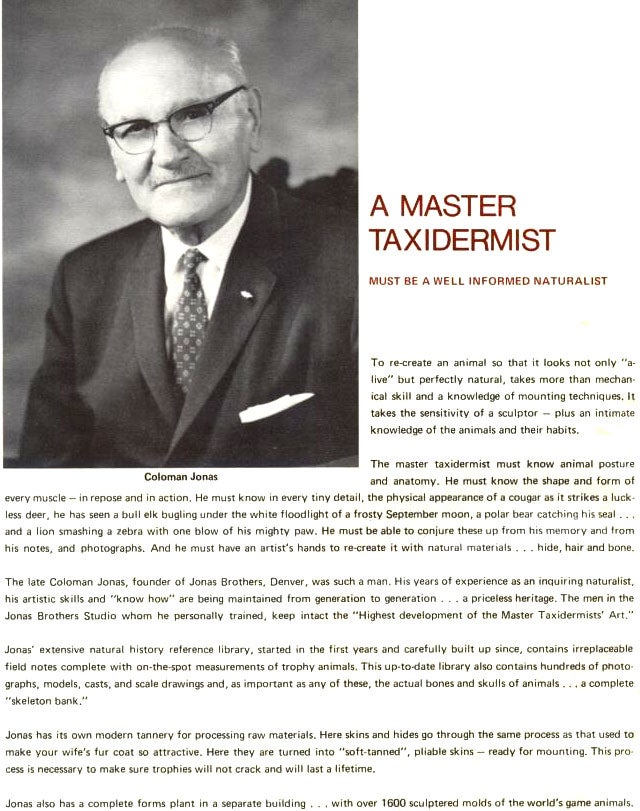
In 1969, Coloman Jonas died 26 days before what would have been his 90th birthday. At the time, he was still featured prominently in the Jonas literature. By all accounts, he lived a happy and fulfilling life.

